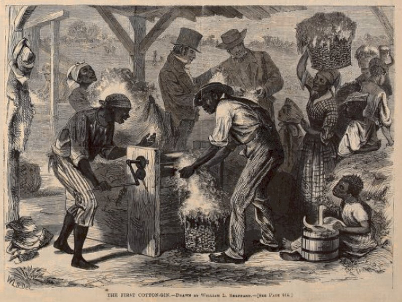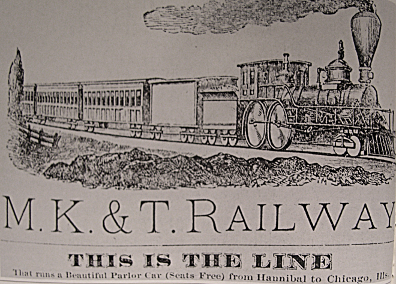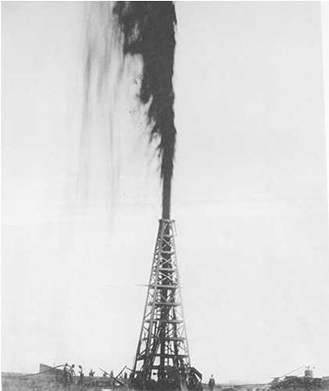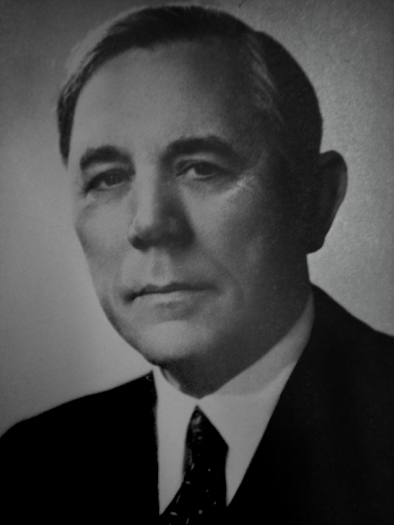Industries That Shaped Texas Politics
Overview
Industries That Shaped Texas Politics
Learning Objective
By the end of this section, you will be able to:
- Summarize the various industries that helped shape Texas politics
Introduction
Industries that shaped Texas politics include oil, cotton, cattle, lumber, and high technology.
Those industries have ebbed and flowed over time, which has been described as creative destruction. Today, Texas has a very diverse economy, with industries such as petroleum and natural gas, farming, steel, banking, health care, telecommunications, and tourism.
King Cotton
From the end of the Civil War through the turn of the century, cotton production increased dramatically as a result of several key developments. These included massive immigration from the deep South and Europe, removal of natives from prime cotton-growing areas, the invention of a new plow that more easily broke the thick black sod of the plains, the invention of barbed wire, the extension of railroads, the invention of cotton ginning, and perfection of cotton compressing at the side of railroads for easier shipping.
Almost no cotton was grown in the United States in 1787, the year the federal constitution was written. However, following the War of 1812, a huge increase in production resulted in the so-called cotton boom, and by midcentury, cotton became the key cash crop (a crop grown to sell rather than for the farmer’s sole use) of the southern economy and the most important American commodity.
The rapid expansion of the cotton industry in the Deep South after the invention of the cotton gin greatly increased demand for slave labor to pick cotton when it all ripened at once, and the Southern states continued as slave societies.

By 1850, of the 3.2 million slaves in the country’s fifteen slave states, 1.8 million were producing cotton; by 1860, slave labor was producing over two billion pounds of cotton per year. Indeed, American cotton soon made up two-thirds of the global supply, and production continued to soar. By the time of the Civil War, South Carolina politician James Hammond confidently proclaimed that the North could never threaten the South because “cotton is king.”
"King Cotton" became a central feature of the Texas economy, attracting considerable investment capital, labor power, and technological development. Other industries within the broader agricultural sector also grew considerably in late nineteenth-century Texas, including ranching, timber, and corn. Still, cotton was king until the 1920s when it began a decades-long decline in importance caused by the drop in demand during the Great Depression, the loss of labor power during World War II, the rise of other centers of cotton production abroad, and federal efforts to hold down production to maintain prices.
Railroads

As the railroads extended their reach in the late nineteenth century across the state to the panhandle and the high plains of West Texas, their influence grew. At first, the combination of more extensive railroad service and the relocation of cotton compresses from the seaports to rail sidings helped cotton farmers break the power of the port facility operators. But, hostility and political competition between farmers and ranchers on the one hand and the railroads on the other quickly grew.
Because railroads tend to be natural monopolies, they tended to exercise enormous market power over their customers--the farmers and ranchers. The railroads' power to set rates was perceived as injurious to farmers and ranchers.
The struggle between railroads and their customers led to the victory of James Stephen Hogg in the gubernatorial election of 1890. Hogg ran chiefly on a populist platform whose main plank was the promise to regulate the railroads. In that same election, a proposed amendment to the Texas constitution was ratified that permitted the creation of a railroad regulating body that among other things would regulate freight rates. Hogg made the first appointments to the new Texas Railroad Commission in 1891. Three years later in 1894, the legislature made those positions elective.
The creation of the Railroad Commission represented the most significant and direct political clash between competing economic interests since the Civil War pitted slaveholding cotton growers against northern industrialists. Governor Hogg pushed through a series of laws, known as "Hogg's Laws," aimed at reining in the railroads, out-of-state corporations, and insurance companies.
The Texas Oil Boom and Bust

The Texas oil boom, sometimes called the gusher age, was a period of dramatic change and economic growth in the U.S. state of Texas during the early 20th century that began with the discovery of a large petroleum reserve near Beaumont, Texas. The find was unprecedented in its size and ushered in an age of rapid regional development and industrialization that has few parallels in U.S. history. Texas quickly became one of the leading oil- producing states in the U.S., along with Oklahoma and California; soon the nation overtook the Russian Empire as the top producer of petroleum. By 1940 Texas had come to dominate U.S. production. Some historians even define the beginning of the world’s Oil Age as the beginning of this era in Texas.
The major petroleum strikes that began the rapid growth in petroleum exploration and speculation occurred in Southeast Texas, but soon reserves were found across Texas and wells were constructed in North Texas, East Texas, and the Permian Basin in West Texas. Although limited reserves of oil had been struck during the 19th century, the strike at Spindletop near Beaumont in 1901 gained national attention, spurring exploration and development that continued through the 1920s and beyond.
Spindletop and the Joiner strike in East Texas, at the outset of the Great Depression, were the key strikes that launched this era of change in the state.
This period had a transformative effect on Texas. At the turn of the century, the state was predominantly rural with no large cities. By the end of World War II, the state was heavily industrialized, and the populations of Texas cities had broken into the top 20 nationally. The city of Houston was among the greatest beneficiaries of the boom, and the Houston area became home to the largest concentration of refineries and petrochemical plants in the world. The city grew from a small commercial center in 1900 to one of the largest cities in the United States during the decades following the era. This period, however, changed all of Texas’ commercial centers (and developed the Beaumont/Port Arthur area, where the boom began).
H. Roy Cullen, H. L. Hunt, Sid W. Richardson, and Clint Murchison were the four most influential businessmen during this era. These men became among the wealthiest and most politically powerful in the state and the nation.

Transportation
The creation of the Interstate Highway System, which was initiated under 1956 legislation creating the National System of Interstate and Defense Highways, was ostensibly for the rapid movement of troops and material for the defense of the national territory. The interstate highway system gave a considerable boost to the development of corporate chains. The prominence of numerous corporate chain companies among the state's top employers in recent years confirms the symbiotic relationship of the dining and entertainment sector to the national highway system. The size of these corporate chains also reflects the explosion of suburbs and exurbs across the state, which was in turn facilitated by extensive highways.
The development of this emerging socio-economic complex--whose key components included petroleum, automobiles, highways, suburbanization, and chain retail and restaurants--was reinforced by forces already operating within the state. The Texas Good Roads and Transportation Association had already been established in 1932 to promote public expenditure on the building and maintenance of roads in Texas.
As early as 1946--well before President Eisenhower's push for a national highway system--the Good Roads Association was instrumental in pushing through the 1946 "Good Roads Amendment" to the Texas Constitution. This amendment required that three-quarters of all revenue from state gasoline taxes be "used for the sole purpose of acquiring rights of way, constructing, maintaining, and policing... public roadways" and for the administration of traffic safety laws.
Technology
Although Texas-based companies are not so dominant in other economic sectors, they do represent some of the leading businesses in their industries. The high-technology sector includes such recognizable names as personal computer manufacturer Dell Computer Corporation (based in Round Rock, Texas), telecommunications giant AT&T (bought in 2005 by Southwestern Bell Communications headquartered in San Antonio), and chipmaker Texas Instruments (Dallas). All three companies are among the top 100 employers in Texas.
Silicon Hills is the nickname for the cluster of high-tech companies in the Austin metropolitan area. The name is analogous to Silicon Valley, but refers to the hilly terrain on the west side of Austin. High tech industries in the area include enterprise software, semiconductors, corporate R&D, biotechnology, the video game industry, and a variety of startup companies.
Technology companies with offices in the area include Advanced Micro Devices,Amazon.com ARM Holdings, AppleInc., Cisco, eBay, ESO, Facebook, Google, IBM, Indeed, Intel, PayPal, Procore, Silicon Labs, Texas Instruments, Oracle Corporation, VMWare, and many others. Dell's worldwide headquarters are located in Round Rock, a suburb of Austin.
References and Further Reading
African Americans slaves using the First cotton-gin, 1790- 1800, by William L. Sheppard. Illustration in Harper's Weekly, 1869 Dec. 18, p. 813. The Library of Congress, Card 91784966, Call Number: Illus. in AP2.H32 Case Y [P&P], Reproduction number: LC-USZ62-103801 (b&w film copy neg.), Medium: 1 print: wood engraving. CREATED/PUBLISHED: 1869 Dec. 18.
Olson, James Stuart (2001). Encyclopedia of the industrial revolution in America. Westport, CT: Greenwood Press. ISBN 978-0-313-30830-7. p.238.
Population of the 100 Largest Urban Places: 1900". U.S. Census Bureau. Retrieved November 3, 2009.
"Chapter Two: Galveston Bay" (PDF). Texas A&M University- Galveston: Galveston Bay Information Center (Galveston Bay Estuary Project). Archived from the original (PDF) on July 20, 2011. Retrieved September 8, 2009. "It [Galveston Bay] is at the center of the state's petrochemical industry, with 30 percent of U.S. petroleum industry and nearly 50 percent of U.S. production of ethylene and propylene Occuring [sic] on its shores. Weisman (2008), p. 166, "The industrial megaplex that begins on the east side of Houston and continues uninterrupted to the Gulf of Mexico, 50 miles away, is the largest concentration of petroleum refineries, petrochemical companies, and storage structures on Earth."
Licenses And Attributions
CC LICENSED CONTENT, ORIGINAL
Revision and Adaptation. Authored by: Kris S. Seago. License: CC BY: Attribution
Industries That Shaped American Politics: Revision and Adaptation. Authored by: John Osterman. License: CC BY: Attribution